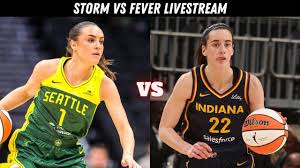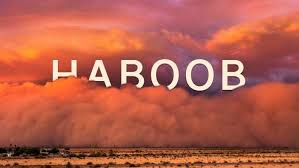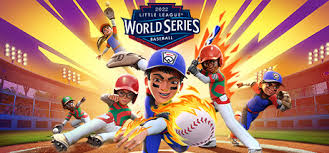
little league world series
The Little League World Series (LLWS) is one of the most iconic youth sporting events in the world. Every August, Williamsport, Pennsylvania, becomes the center of attention for baseball fans as the best Little League baseball teams gather to compete for glory on an international stage. For decades, the LLWS has been a showcase of athletic skill, teamwork, sportsmanship, and the pure joy of baseball. Unlike professional leagues, this tournament reflects the passion and dreams of young athletes who represent not only their hometowns but also their countries.
This article provides a comprehensive guide to the Little League World Series, exploring its origins, structure, traditions, notable players, controversies, media presence, and its role in shaping baseball culture worldwide.
Origins of the Little League World Series
The story of the LLWS begins in Williamsport, Pennsylvania, in 1939, when Carl Stotz had the idea of organizing a structured youth baseball league. Stotz envisioned a program where children could learn teamwork, discipline, and fair play through baseball. The first official Little League game took place on June 6, 1939, and the concept quickly spread across Pennsylvania and the United States.
By 1947, the very first Little League World Series was held, though it was much smaller than the global tournament we know today. That year, 12 teams from across Pennsylvania and surrounding states competed. Over time, the event expanded nationally and then internationally, creating a platform for young athletes from around the world to showcase their baseball talents.
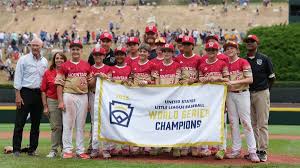
Growth and Expansion
In the early decades, the LLWS was primarily an American event. However, as baseball’s popularity grew globally, so did the tournament. By the 1950s and 1960s, international teams started participating.
- In 1957, a team from Monterrey, Mexico, stunned the baseball world by winning the LLWS. This victory put international Little League baseball on the map.
- In later decades, teams from Taiwan, Japan, South Korea, Curaçao, Canada, and Latin America became regular contenders, elevating the competition’s standard.
The global reach of the LLWS transformed it from a regional American pastime into a worldwide youth sporting event. Today, the LLWS includes 16 teams — 8 from the United States and 8 international teams — battling for the championship.
Structure of the Tournament
The Little League World Series is structured to ensure fair representation and exciting matchups.
U.S. Regions
American teams qualify through state and regional tournaments. The U.S. is divided into regions such as:
- Great Lakes
- Mid-Atlantic
- Midwest
- New England
- Northwest
- Southeast
- Southwest
- West
International Regions
Similarly, international teams qualify through regional tournaments in areas like:
- Asia-Pacific
- Australia
- Canada
- Caribbean
- Europe & Africa
- Japan
- Latin America
- Mexico
This structure creates a balanced competition where teams from across the globe face off in Williamsport.
The Williamsport Experience
Williamsport, Pennsylvania, is the heart and soul of the Little League World Series. Each year, tens of thousands of fans travel to the small town to witness the event. The Howard J. Lamade Stadium and the newer Volunteer Stadium serve as the iconic venues where dreams are made.
For players, the LLWS is more than just baseball. It’s a cultural exchange where children from different parts of the world meet, bond, and learn from one another. The famous “pin trading tradition”, where players exchange Little League pins from their home regions, symbolizes the spirit of friendship and global unity.
Media Coverage and Popularity
The LLWS is broadcast internationally, with ESPN and ABC providing extensive coverage. Millions of viewers tune in each summer to watch games live, making it one of the most-watched youth sporting events in the world. The television exposure not only promotes baseball but also provides unforgettable moments for players and fans alike.
Some games have reached legendary status due to dramatic finishes, extra-inning thrillers, or incredible individual performances.
Famous Alumni
Over the years, several LLWS players have gone on to become Major League Baseball (MLB) stars. Some notable alumni include:
- Gary Sheffield – Power-hitting MLB All-Star.
- Jason Varitek – World Series champion with the Boston Red Sox.
- Todd Frazier – Former New York Mets and Cincinnati Reds player, who starred in the 1998 LLWS.
- Jurickson Profar – Curaçao native who played in the LLWS before reaching MLB.
- Cody Bellinger – MLB star who also participated in youth baseball tournaments at the highest level.
These success stories inspire young players to dream big, proving that the LLWS can be a stepping stone to professional careers.
Cultural Impact
The Little League World Series is more than just a baseball tournament — it’s a celebration of youth, community, and sportsmanship. It reflects the values of teamwork, perseverance, and friendship across cultural boundaries. For many communities, participating in the LLWS is a once-in-a-lifetime honor that brings pride to their towns and countries.
The tournament also plays a role in baseball diplomacy, uniting children from different political, cultural, and linguistic backgrounds through sport.
Controversies and Challenges
Like any major sporting event, the LLWS has faced challenges:
- Eligibility scandals – In some cases, teams have been disqualified for using ineligible players outside their districts.
- Overemphasis on winning – Critics argue that the intense media spotlight may put undue pressure on children.
- Professionalization of youth sports – Some debate whether the LLWS has become too competitive, overshadowing the fun and developmental aspects of Little League.
Despite these challenges, the LLWS continues to evolve, with rules and safeguards to protect young athletes’ well-being.
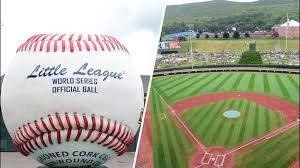
Memorable Moments
Throughout its history, the LLWS has produced countless unforgettable moments:
- Monterrey, Mexico (1957) – The first non-U.S. team to win.
- Taiwan dominance (1970s–1980s) – Taiwanese teams won numerous championships, establishing an international powerhouse.
- Mo’ne Davis (2014) – The first girl to pitch a shutout in LLWS history, breaking gender barriers.
- Hawaii’s triumphs – Teams from Hawaii have repeatedly brought excitement and victories to the U.S. bracket.
Each generation of fans has its own set of LLWS memories, making it a timeless tradition.
The Future of the Little League World Series
Looking ahead, the LLWS is expected to continue growing, especially as baseball expands internationally. The inclusion of baseball in global events like the Olympics fuels more interest in youth baseball development.
With technology, social media, and increased international exposure, the LLWS will remain a symbol of hope, unity, and the love of the game.
The Little League World Series: History, Legacy, and Global Impact
The Little League World Series (LLWS) is one of the most beloved youth sports tournaments in the world. Each year in Williamsport, Pennsylvania, the event draws global attention as children between the ages of 10 and 12 represent their hometowns, states, and countries in a quest for glory.
For decades, the LLWS has been more than just a baseball tournament. It has been a celebration of teamwork, sportsmanship, determination, and the dreams of young athletes. It has produced magical moments, legendary games, and even future professional stars. From its humble beginnings in the late 1930s to its present-day global reach, the Little League World Series has grown into an institution that embodies the spirit of youth sports.
This comprehensive article will explore every angle of the LLWS: its history, structure, traditions, famous players, cultural influence, challenges, and future.
Chapter 1: The Origins of Little League
The foundation of Little League Baseball was laid in 1939 by Carl Stotz, a man from Williamsport, Pennsylvania. He believed that baseball, already America’s pastime, should be structured for children in a way that taught them teamwork, discipline, and fair play.
The very first Little League team was formed with just three teams in Williamsport: Lundy Lumber, Lycoming Dairy, and Jumbo Pretzel. The first game took place on June 6, 1939.
By 1947, the idea had spread, and the first official Little League World Series was played. That year, only 12 teams from Pennsylvania and nearby states participated, but the seeds of something far greater were planted.
Chapter 2: The First World Series (1947)
The 1947 Little League World Series (then known as the National Little League Tournament) took place in Williamsport. Unlike today’s global event, it was a small, regional competition.
- The Maynard Midget League All-Stars from Williamsport won the inaugural championship.
- Games were played at Original Field in Williamsport, before Lamade Stadium existed.
Though modest in scale, the tournament drew national attention. Newspapers covered it, and families realized that children’s baseball could have as much drama and excitement as professional leagues.
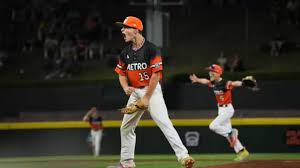
Chapter 3: Expansion and Globalization
The 1950s and 1960s were pivotal decades for the LLWS. The tournament began including international teams, marking the beginning of its global reputation.
- 1957: The Industrial Little League team from Monterrey, Mexico shocked the world by winning the championship, the first non-U.S. team to do so. Ángel Macías famously pitched a perfect game in the final — the only one in LLWS championship history.
- 1960s: The LLWS continued to expand, with teams from Asia, Europe, and Latin America joining.
This international presence transformed the LLWS into a world-class youth sporting event.
Chapter 4: The Golden Era of International Dominance
From the 1970s to the 1990s, international teams — particularly from Taiwan, Japan, South Korea, and the Caribbean — began to dominate.
- Taiwan (1971–1996): Teams from Taiwan won the LLWS 17 times, establishing themselves as the most successful international powerhouse. Their precision, discipline, and skill level made them nearly unbeatable.
- Japan: Emerging in the 1990s and 2000s, Japanese teams became perennial contenders, known for their pitching depth and flawless defense.
- Curaçao (2004): This small Caribbean island shocked the world by defeating a U.S. team, proving that even tiny nations could succeed on the big stage.
This era elevated the LLWS to new heights, making it a true global championship.
Chapter 5: The Structure of the Tournament
Today, the Little League World Series features 16 teams — 8 from the United States and 8 international teams.
U.S. Regions:
- Great Lakes
- Mid-Atlantic
- Midwest
- New England
- Northwest
- Southeast
- Southwest
- West
International Regions:
- Asia-Pacific
- Australia
- Canada
- Caribbean
- Europe & Africa
- Japan
- Latin America
- Mexico
Each region holds its own qualifying tournaments, with champions earning the right to play in Williamsport. This ensures diversity and fairness, with representation from around the globe.
Chapter 6: The Williamsport Experience
Every August, the town of Williamsport, Pennsylvania, transforms into the global capital of youth baseball. The tournament is played at two stadiums:
- Howard J. Lamade Stadium – The iconic main stadium that can seat up to 40,000 with hillside seating.
- Volunteer Stadium – Built in 2001 to accommodate growing crowds and international participation.
Beyond Baseball
The LLWS is more than just a competition. Players live in dormitories, meet kids from other countries, and take part in traditions like pin trading. This cultural exchange is one of the most cherished aspects of the event.
Fans, too, flock to Williamsport for the family-friendly atmosphere, food stalls, parades, and a chance to witness history.
Chapter 7: Legendary LLWS Moments
Over the decades, the LLWS has given us unforgettable stories:
- 1957 – Monterrey’s Miracle: Ángel Macías’s perfect game put Mexico on the map.
- 1971 – Taiwan’s Rise: Taiwan began its era of dominance, defeating teams with unprecedented skill.
- 1982 – Kirkland, Washington: A U.S. team stunned Taiwan, one of the greatest upsets in LLWS history.
- 1998 – Todd Frazier’s Heroics: The future MLB star led Toms River, New Jersey, to victory.
- 2014 – Mo’ne Davis: She became the first girl to pitch a shutout in LLWS history, breaking barriers and inspiring millions.
- 2022 – Hawaii’s dominance: The Honolulu Little League crushed opponents with incredible talent and sportsmanship.
Each moment adds to the rich tapestry of LLWS history.
Chapter 8: Famous Alumni
Many LLWS players have gone on to professional careers. Some include:
- Gary Sheffield – MLB All-Star with over 500 home runs.
- Jason Varitek – Captain of the Boston Red Sox during their 2004 World Series win.
- Todd Frazier – 1998 LLWS star turned MLB slugger.
- Jurickson Profar – Curaçao native who became a versatile MLB player.
- Cody Bellinger – Star outfielder and MVP, who once dreamed big in youth baseball.
For kids, the LLWS is proof that dreams can come true.
Chapter 9: Media Coverage
The LLWS exploded in popularity with the rise of television coverage. ESPN began broadcasting the games in the early 1980s, and today, nearly every game is televised worldwide.
- ABC’s “Wide World of Sports” helped bring the LLWS into living rooms across America.
- Today, ESPN and ABC provide wall-to-wall coverage, turning the LLWS into must-watch TV every August.
The result? Millions of fans, young and old, tune in to watch the magic unfold.
